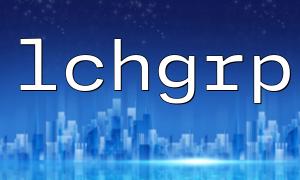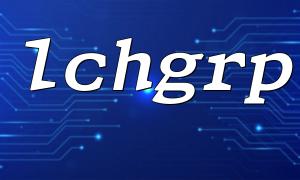In PHP, the lchgrp and chgrp functions are both related to changing the group ownership of files, but they have some differences in their operation. Understanding these differences and the applicable scenarios for each function is important for developers to effectively use them when working with the file system. In the following sections, we will explore the functions, differences, and usage scenarios in detail.
The chgrp function is used to change the group ownership of a file or directory. Its syntax is as follows:
<span><span><span class="hljs-keyword">bool</span></span><span> </span><span><span class="hljs-title function_ invoke__">chgrp</span></span><span> ( </span><span><span class="hljs-keyword">string</span></span><span> </span><span><span class="hljs-variable">$filename</span></span><span> , </span><span><span class="hljs-keyword">mixed</span></span><span> </span><span><span class="hljs-variable">$group</span></span><span> )
</span></span>$filename: Specifies the file or directory path whose group ownership is to be modified.
$group: Specifies the new group ownership, which can be either a group name (in string form) or a group ID (in numeric form).
This function will change the group ownership of the target file or directory, but it depends on whether the file is a symbolic link. If the target is a symbolic link, chgrp will change the group ownership of the target file or directory that the symbolic link points to, not the link itself.
The lchgrp function is similar to chgrp, as it is also used to change the group ownership of a file or directory. Its syntax is as follows:
<span><span><span class="hljs-keyword">bool</span></span><span> </span><span><span class="hljs-title function_ invoke__">lchgrp</span></span><span> ( </span><span><span class="hljs-keyword">string</span></span><span> </span><span><span class="hljs-variable">$filename</span></span><span> , </span><span><span class="hljs-keyword">mixed</span></span><span> </span><span><span class="hljs-variable">$group</span></span><span> )
</span></span>$filename: Specifies the file or directory path whose group ownership is to be modified.
$group: Specifies the new group ownership.
The key difference with lchgrp is that it always changes the group ownership of the symbolic link itself, rather than the group ownership of the target file or directory it points to. This means that even if the file is a symbolic link, lchgrp will only modify the link’s attributes and will not recursively affect the target file or directory.
Handling of Symbolic Links:
chgrp will modify the group ownership of the target file or directory that a symbolic link points to.
lchgrp will only modify the group ownership of the symbolic link itself, without affecting the target file or directory.
Use Cases:
If you don’t care about the permissions of the symbolic link itself and just want to change the permissions of the actual file, you can use chgrp.
If you want to modify the permissions of the symbolic link itself without affecting the target file or directory, you should use lchgrp.
Security:
lchgrp provides higher security because it avoids recursively changing the properties of the target file pointed to by the symbolic link. Using chgrp may accidentally change the attributes of a file or directory that shouldn’t be modified.
When to Use chgrp:
When you need to change the group ownership of a file or directory and the target file might be a symbolic link, using chgrp is more appropriate. It will modify the group ownership of the target file the symbolic link points to, ensuring consistency across related files.
For example, when managing a file server, you might encounter scenarios where you need to update the group ownership of multiple files, and chgrp simplifies this process.
When to Use lchgrp:
If you only need to update the group ownership of the symbolic link itself or you intentionally want to avoid changing the permissions of the file or directory the link points to, use lchgrp. This will give you precise control over which file attributes are modified.
For instance, when maintaining symbolic links that point to different directories or files, you might not want to change the group ownership of the actual files, only the links.
Although the chgrp and lchgrp functions have similar functionality in changing the group ownership of files or directories, they differ in their handling of symbolic links. chgrp will change the group ownership of the target file or directory that a symbolic link points to, whereas lchgrp will only modify the group ownership of the symbolic link itself. In actual development, which function to use depends on your specific needs, such as whether you need to modify the symbolic link’s properties or only care about the actual file’s group ownership.
Understanding the differences and application scenarios of these two functions will help developers make more appropriate choices when managing file permissions.

